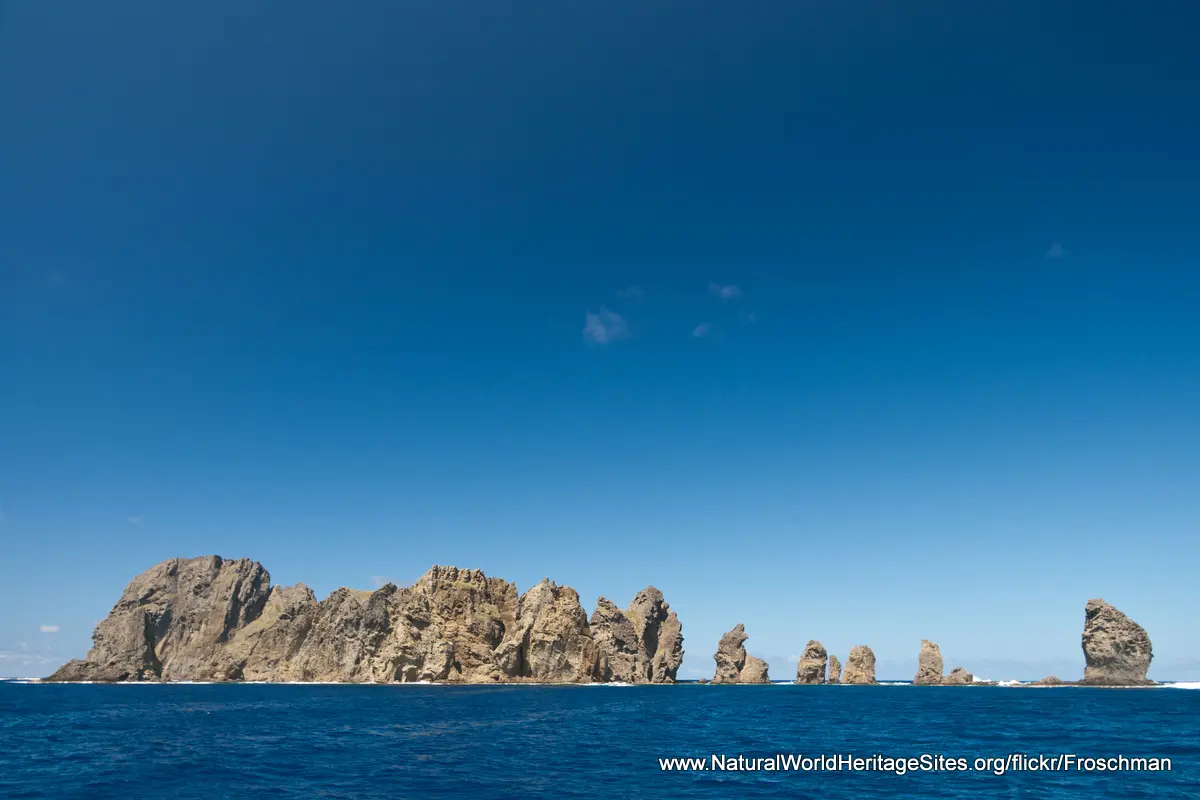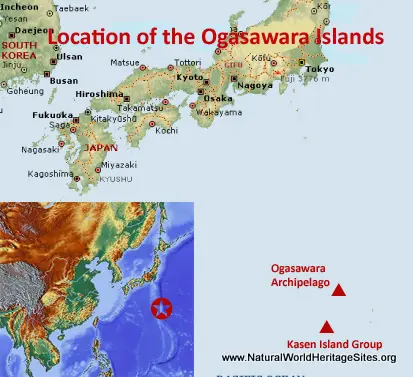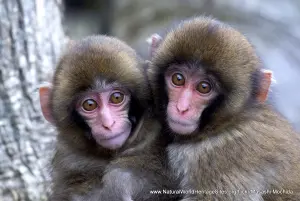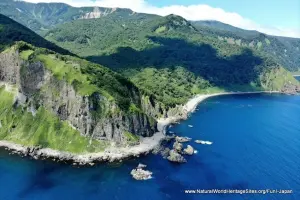EXPLORE Ogasawara Islands with this slideshow, check the location map and get all the facts and information below.
For slideshow description see right or scroll down (mobile). Click to view slideshow
Location and Values: The Ogasawara Islands are located in the north-western Pacific Ocean, about 1,000 km south of the main Japanese archipelago. The world heritage site includes about 30 islands spread between five separate clusters within an area that stretches for 400 km from north to south. Most of this small site consists of the land area of the islands, with about 20% covering adjacent coastal waters. The islands provide exceptional opportunities for the study and understanding of biogeography, evolution and adaptive radiation of species, particularly amongst its native plants and land snails. These groups demonstrate affinities with Northeast and Southeast Asia, which provided a source of initial colonization for the islands. Evolutionary processes have subsequently resulted in the development of numerous new species with fine-scale adaptive radiation between (and sometimes within) the different islands of the archipelago. Similar evolutionary processes first came to the attention of Charles Darwin during his visit to the Galapagos Islands (another world heritage site) in 1835, and led to the development of his ideas on the theory of evolution by natural selection.
Conservation Status and Prospects. According to IUCN’s Conservation Outlook Assessment (2020) the conservation status of the Ogasawara Islands is ‘good, with some concerns’. The IUCN report notes that invasive species represent by far the most serious threat to the islands, especially the invasion of black rats and green anole (an arboreal lizard) to Anijima Island and the spread of an invasive flatworm to the land snail habitat of Chichijima Island. Some notable success has been made in eradicating invasive alien species (such as cats, goats and rats) from some islands but further sustained efforts are required against green anole, flatworms and the invasive African big-headed ant. Increases in visitation with the establishment of air services to the islands create special challenges for biosecurity and the prevention of accidental introductions of invasive alien species. A less well understood potential threat is climate change and its impact on terrestrial and marine habitats.
Links:
Google Earth
Official UNESCO Site Details
IUCN Conservation Outlook
UNEP-WCMC Site Description
Birdlife IBA
Slideshow description
The slideshow ‘tells the story’ of the Ogasawara Islands with a portfolio of photos that illustrate some of the main features of the islands and surrounding waters. It starts with some general views, showing the rugged coastal cliffs, sandy bays and isolated rock stacks, before a feature on the typical marine life of the surrounding seas – dolphins, a humpback whale, coral reefs, fish, lobster and shrimps, a ray and shark. Returning to land, there are a variety of images of the main island group, and two of the most notable endemic species – the Bonin Flying Fox (a fruit-eating bat) and the Ogasawara Snake-eyed Skink (a small lizard). The final part of the slideshow features some photos of the endangered short-tailed albatross on the most northerly Mukojima Island group, and finishes with some images of the small isolated westerly Nishonishima Island with its undulating grassland plateau and spectacular coastal cliffs and bays.
The following Flickr photographers and other sources are acknowledged with thanks for their contributions to this slideshow: Ogasawara.info.jp, akisoto.com, Tripadvisor, Pha Pha, Pinterest, Froschman, fo.ol, Timeout.com, japan.travel, Lee Render, Takashi Uzu/Minden Pictures, Abdel Bizid, Ippel and Janine, Japan Guide, Kumiko, USFWS, Kuruman and Kzaral.
Factfile
Website Category:
Islands
Area: 79 km2
Inscribed: 2011
UNESCO Criterion:
- Ecological processes (ix);





